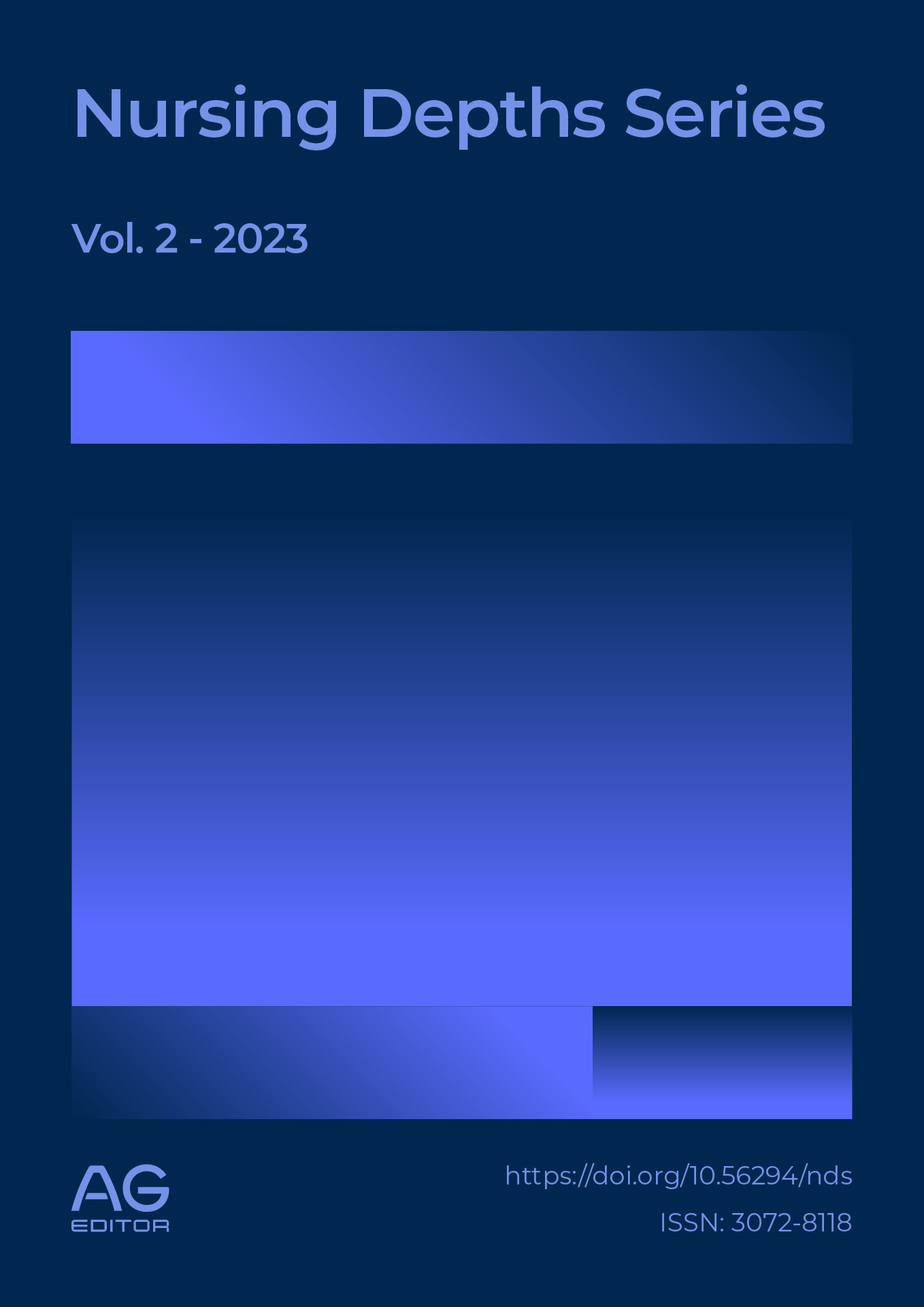Nursing care in hypertensive patients with cardiovascular risk attending a primary care facility in North Lima
DOI:
https://doi.org/10.56294/nds202381Keywords:
Hypertension, Cardiovascular diseases, Heart disease risk factors, Nursing CareAbstract
Cardiovascular risks are a consequence of high blood pressure in individuals with high blood pressure, but if not adequately controlled, these risks can increase. Therefore, the research objective is to determine the nursing care provided to hypertensive patients with cardiovascular risk who attend a primary care facility in North Lima. This is a quantitative, descriptive-cross-sectional study with a population of 265 participants who answered a sociodemographic questionnaire and a cardiovascular risk calculator. The results show that 4.2% have a very high cardiovascular risk, 10.9% have a high cardiovascular risk, 37.4% have a moderate cardiovascular risk, and 47.5% have a very low cardiovascular risk. In conclusion, people with high blood pressure should be educated about the risks that the disease can generate and how to minimize the risks that can affect their health.
References
[1] A. Maharani, D. Sujarwoto, D. Oceandy, G. Tampubolon, and A. Patel, “Cardiovascular disease risk factor prevalence and estimated 10-year cardiovascular risk scores in Indonesia: The Smarthealth Extend study,” PLoS One, vol. 14, no. 4, pp. 1–13, 2019, doi: 10.1371/journal.pone.0215219. DOI: https://doi.org/10.1371/journal.pone.0215219
[2] L. Van, M. Van Beers, J. Kroes, L. Van De Stadt, D. Van Schaardenburg, and M. Nurmoham, “Cardiovascular risk in persons at risk of developing rheumatoid arthritis,” PLoS One, vol. 15, no. 8, pp. 1–11, 2020, doi: 10.1371/journal.pone.0237072. DOI: https://doi.org/10.1371/journal.pone.0237072
[3] J. Abrams et al., “Conocimientos de la hipertensión: Health beliefs about hypertension in an under-resourced community in the dominican republic,” PLoS One, vol. 15, no. 6, pp. 1–13, 2020, doi: 10.1371/journal.pone.0235088. DOI: https://doi.org/10.1371/journal.pone.0235088
[4] M. Cuba, J. Martinez, and I. Ortiz-Galeano, “Riesgo cardiovascular y uso adecuado de aspirina en prevención primaria de eventos cardiovasculares en el ambulatorio de Clínica Médica del Hospital de Clínicas,” An. la Fac. Ciencias Medicas, vol. 53, no. 2, pp. 53–58, 2020, [Online]. Available: http://scielo.iics.una.py/scielo.php?script=sci_arttext&pid=S1816-89492020000200053#:~:text=El 60%25 con adecuada indicación,prevención primaria de eventos cardiovasculares. DOI: https://doi.org/10.18004/anales/2020.053.02.53
[5] J. Pajuelo, I. Bernui, D. Delgado, P. Palomo, A. Aquino, and O. Cochachin, “Riesgo cardiovascular en una población escolar con exceso de peso,” An. la Fac. Med., vol. 81, no. 3, pp. 278–284, 2020, doi: 10.15381/anales.v81i3.19603. DOI: https://doi.org/10.15381/anales.v81i3.19603
[6] J. Suárez and M. Gutiérrez, “Riesgo cardiovascular según la intensidad del climaterio en mujeres de edad mediana con antecedentes de preeclampsia,” Rev. Cient. Medicentro (Villa Clara), vol. 24, no. 3, pp. 531–547, 2020, [Online]. Available: http://scielo.sld.cu/scielo.php?script=sci_arttext&pid=S1029-30432020000300531
[7] A. Paramio, L. González, D. Lasoncex, E. Pérez, and E. Carrazana, “Riesgo cardiovascular global en el adulto mayor vinculado a los programas de actividad física comunitaria,” CorSalud, vol. 12, no. 3, pp. 318–326, 2020, [Online]. Available: http://www.revcorsalud.sld.cu/index.php/cors/article/view/464/1286
[8] M. Revueltas, Y. Valdés, S. Serra, R. Suárez, and J. Ramírez, “Estimación del riesgo cardiovascular en una población, según dos tablas predictivas.,” Arch. Médico Camagüey, vol. 24, no. 5, pp. 668–700, 2020, [Online]. Available: http://www.revistaamc.sld.cu/index.php/amc/article/view/7533/3636
[9] M. Almazán, “Cardiovascular risk factors in young Mexican adults,” Arch. Cardiol. Mex., vol. 90, no. 4, pp. 427–435, 2020, doi: 10.24875/ACM.20000258. DOI: https://doi.org/10.24875/ACM.20000258
[10] M. Expósito, “Palliative Care and Nursing: A Look Inside,” Aquichan, vol. 22, no. 2, pp. 1–4, 2022, doi: 10.5294/aqui.2022.22.2.1. DOI: https://doi.org/10.5294/aqui.2022.22.2.1
[11] L. García and O. Centurión, “Medidas preventivas y manejo diagnóstico y terapéutico de la hipertensión arterial y las crisis hipertensivas,” Rev. salud publica Paraguaya, vol. 10, no. 2, pp. 59–66, 2020, [Online]. Available: http://scielo.iics.una.py/scielo.php?script=sci_arttext&pid=S2307-33492020000200059 DOI: https://doi.org/10.18004/rspp.2020.diciembre.59
[12] B. Kanna et al., “Qualitative study of knowledge, perception, behavior and barriers associated with cardiovascular disease risk among overweight and obese Hispanic taxi drivers of South Bronx, NYC,” BMC Public Health, vol. 20, no. 1, pp. 1–10, 2020, doi: 10.1186/s12889-020-08751-0. DOI: https://doi.org/10.1186/s12889-020-08751-0
[13] S. Cerpa, L. Rimarachín, and B. A, “Asociación entre nivel socioeconómico y riesgo cardiovascular en la población peruana,” Rev. Saude Publica, vol. 75, no. 4, p. e20210278, 2022, doi: 10.1590/0034-7167-2021-0278. DOI: https://doi.org/10.1590/0034-7167-2021-0278
[14] L. Hurtado, C. Saldarriaga, L. Jaramillo, and M. Hormaza, “Cardiovascular risk during menopause: gynecologist and cardiologist view,” Rev. Colomb. Cardiol., vol. 29, no. 1, pp. 7–15, 2022, doi: 10.24875/RCCAR.21000101. DOI: https://doi.org/10.24875/RCCAR.21000101
[15] E. Velandia, L. Vargas, Ó. Vargas, and H. Benavidez, “Prevalence of obesity and cardiovascular risk in workers in the hydrocarbon area,” Rev. Colomb. Cardiol., vol. 29, no. 1, pp. 57–63, 2022, doi: 10.24875/RCCAR.M22000118. DOI: https://doi.org/10.24875/RCCAR.M22000118
[16] A. Quintana et al., “Caracterización de la hipertensión arterial en adultos menores de 30 años de edad de un hospital del Paraguay,” Rev. virtual la Soc. Paraguaya, vol. 9, no. 2, pp. 44–54, 2022. DOI: https://doi.org/10.18004/rvspmi/2312-3893/2022.09.02.44
[17] C. Fernández and P. Baptista, “Metodología de la Investigación.” p. 634, 2015, [Online]. Available: http://observatorio.epacartagena.gov.co/wp-content/uploads/2017/08/metodologia-de-la-investigacion-sexta-edicion.compressed.pdf.
[18] Organización Mundial de la Salud and Organización Panamericana de la Salud, “Calculadora Riesgo Cardiovascular.,” OPS, 2007. https://www.paho.org/cardioapp/web/#.
Published
Issue
Section
License
Copyright (c) 2023 David Hugo Bernedo-Moreira, Alfredo Giovanni Lazo-Barreda, Paul Espiritu-Martinez, Juan Richar Villacorta Guzmán, Ariel Sosa Remón (Author)

This work is licensed under a Creative Commons Attribution 4.0 International License.
The article is distributed under the Creative Commons Attribution 4.0 License. Unless otherwise stated, associated published material is distributed under the same licence.






